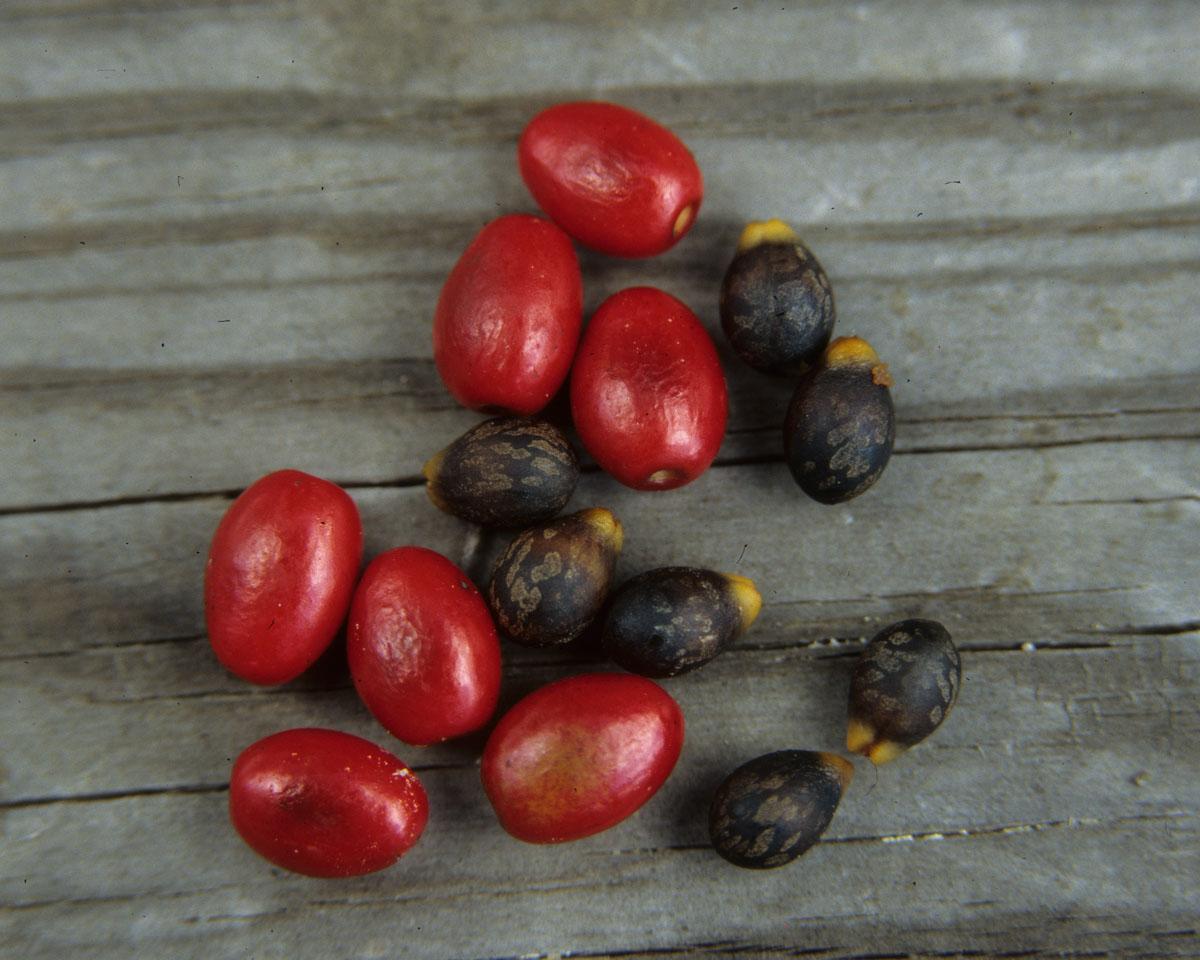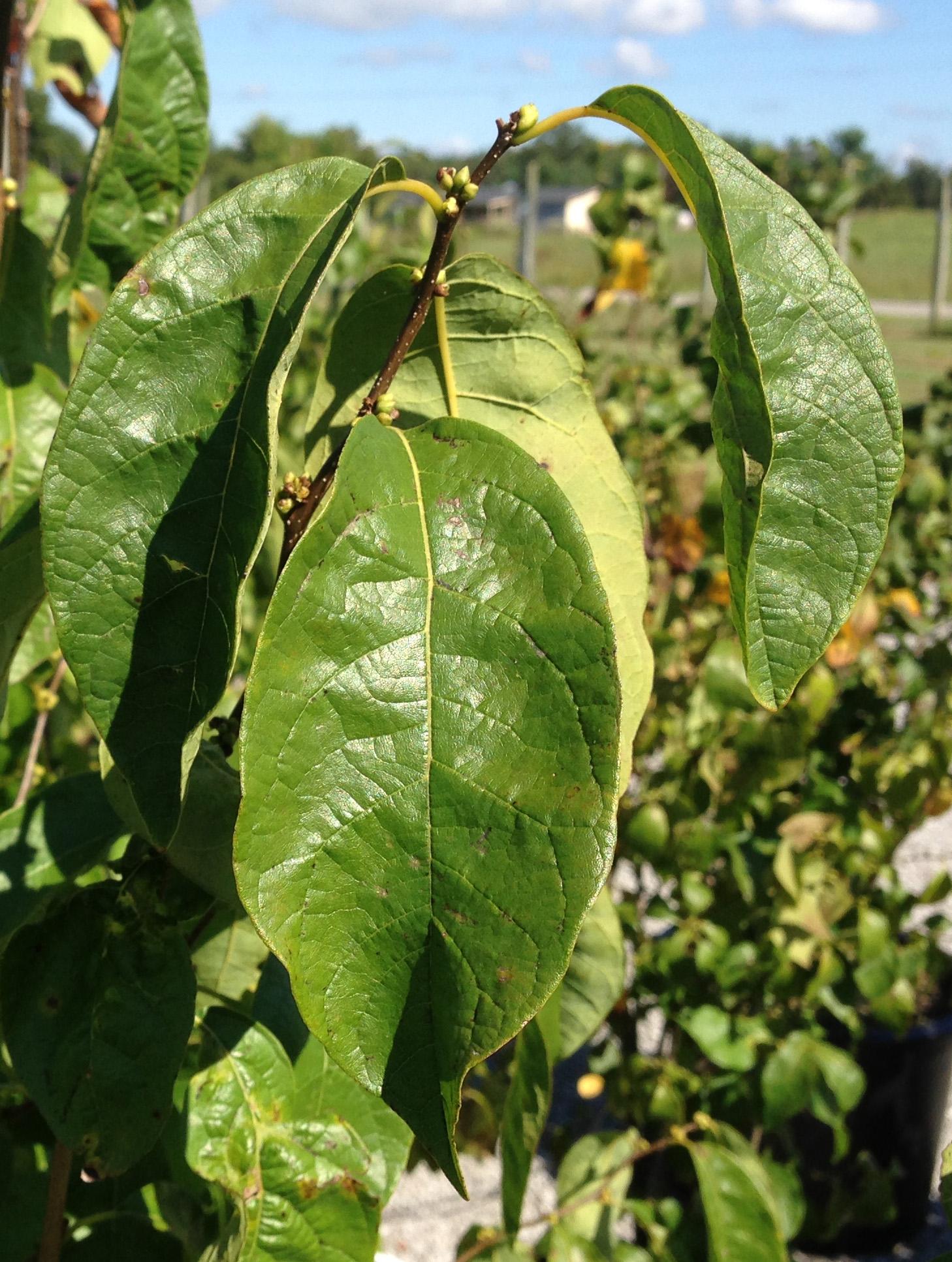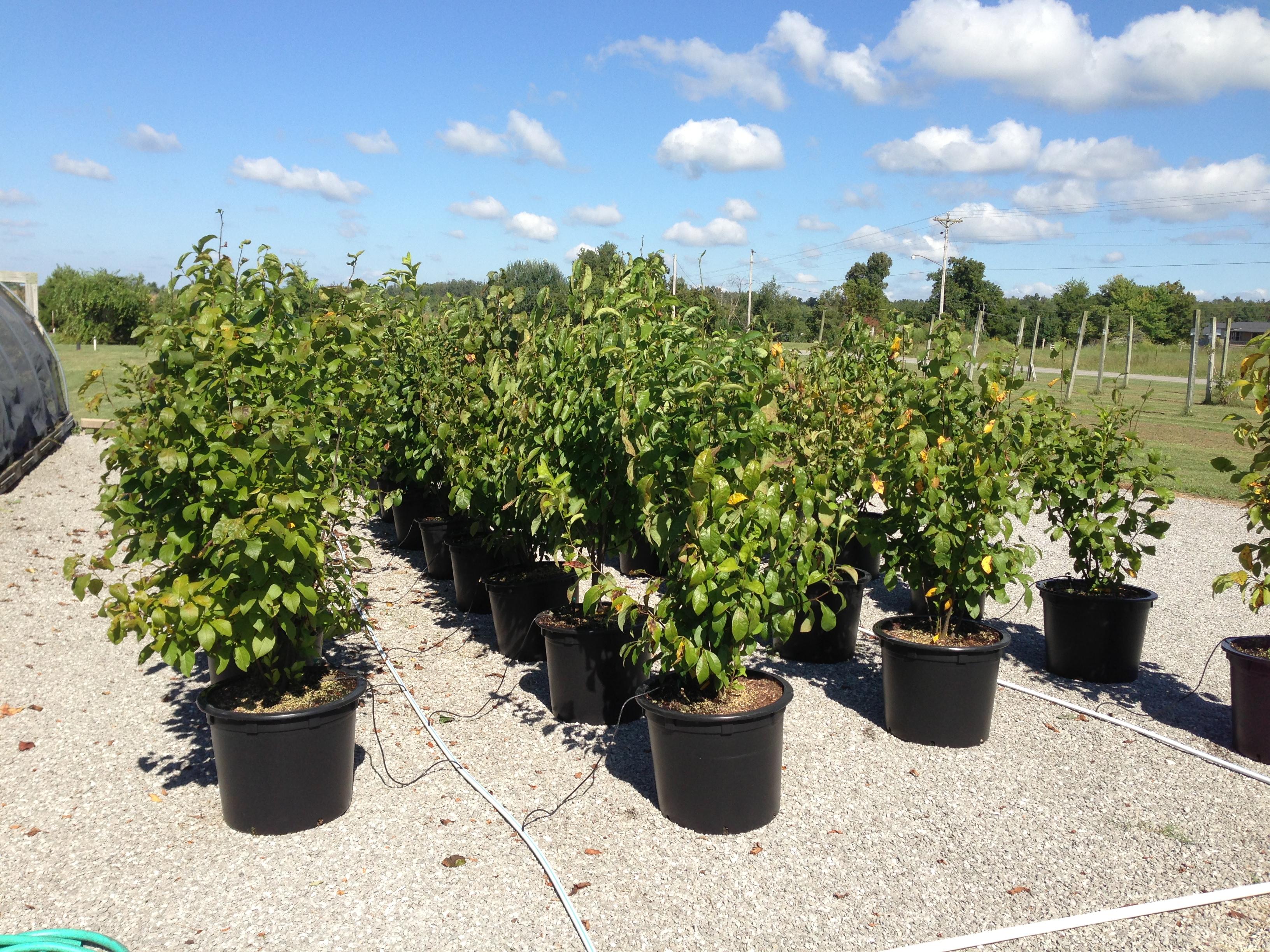Lindera benzoin, American Spicebush
 Lindera benzoin, American Spicebush has been frequently listed as a native alternative for Euonymus alatus. In the Lauraceae family the leaves are alternate, simple (smooth edged). Fall color is yellow. Spicebush is dioecious so male and female flowers are on separate plants. The small yellow flowers occur in clusters and while not particularly showy are attractive. The autumn fruit is an attractive red drupe eaten by wood thrush and veery according to Ronald Jones in his book Plant Life of Kentucky. Spicebush seed is collected in October and November with occasion years of some seed being mature in mid to late September. In open sun it makes a dense shrub; in shade it often is found as a small open-branched tree.
Lindera benzoin, American Spicebush has been frequently listed as a native alternative for Euonymus alatus. In the Lauraceae family the leaves are alternate, simple (smooth edged). Fall color is yellow. Spicebush is dioecious so male and female flowers are on separate plants. The small yellow flowers occur in clusters and while not particularly showy are attractive. The autumn fruit is an attractive red drupe eaten by wood thrush and veery according to Ronald Jones in his book Plant Life of Kentucky. Spicebush seed is collected in October and November with occasion years of some seed being mature in mid to late September. In open sun it makes a dense shrub; in shade it often is found as a small open-branched tree.
Propagation is mostly by seed except for the few cultivars which are hard to propagate by cuttings. Once fruit is collected, remove the pulp immediately and put into a most media (perlite wetted and drained or moist peat or sand) and start stratification. The Seeds of Woody Plants in the United States: Agriculture Handbook 450 cites literature that recommends stratification of 30 days at 77 degrees Fahrenheit followed by 90 days at 34-41 degrees Fahrenheit. Amy Poston and Robert Geneve of the University of Kentucky found that - "seeds exposed to warm stratification prior to chilling stratification showed significantly lower germination percentages compared to chilling alone. In addition, the warm pre-treatment appeared to delay dormancy release during the subsequent chilling period. Therefore, a warm stratification period is not necessary to achieve a high germination percentage. There is also morphological evidence that supports this conclusion in that spicebush seeds have a fully developed embryo, therefore, a warm stratification period is unnecessary for embryo growth." (A.L. Poston and R.L. Geneve. Propagation of Spicebush (Lindera benzoin)©. 2006. Combined Proceedings International Plant Propagators’ Society, Volume 56:458-460)
At the UKREC, Princeton, KY the seeds have sprouted during stratification; occasional observation is recommended.

